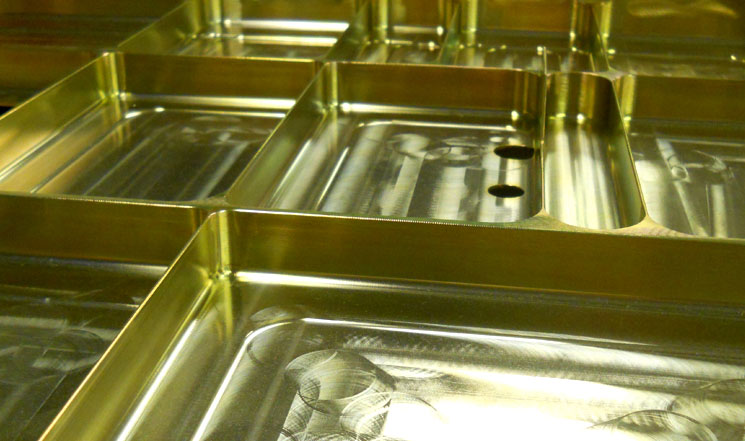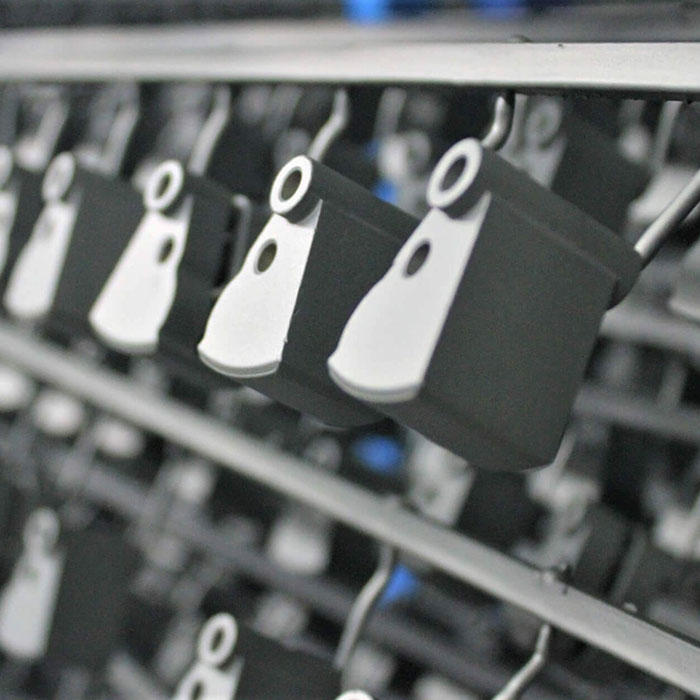MILITARY ∙ MEDICAL ∙ AEROSPACE ∙ ELECTRONICS ∙ SEMICONDUCTOR ∙ CONSTRUCTION

Chemical film coatings, also known as Chem Film or chromate conversion coatings, are some of the best and cheapest ways to keep metal parts from rusting while still letting electricity flow through them. These coatings are used in aerospace, military, and industrial manufacturing. They add an important layer of protection without changing the size of the base metal, which makes them perfect for precision parts. Read on to learn more.
What is Chem Film?
A chemical conversion process that works mostly on aluminum and aluminum alloys makes Chem Film coatings. The coating reacts with the metal surface to provide a layer that protects against corrosion and makes paint stick better. Chem Film, on the other hand, makes a thin protective layer that allows for great electrical conductivity and precise dimensional tolerances. Anodizing, on the other hand, adds thickness.
The MIL-DTL-5541 standard says that there are two primary types of Chem Film: Type I (chromate-based) and Type II (non-chrome). Each has its own qualities and uses, based on the finish you want, how resistant it is to corrosion, and what the environment needs.
Type I: Chromate Chem Film Coating
Type I Chem Film makes a strong, corrosion-resistant coating by using hexavalent chromium compounds. Because it works so well in tough environments, this old formula has been employed in the aerospace and defense industries for decades.
The main benefits are:
- Better protection against corrosion, even in wet or marine situations.
- Primer and topcoat systems stick very well to paint.
- For grounding and shielding uses, it has good electrical conductivity.
But because of rules about hexavalent chromium that protect workers and the environment, Type I coatings are becoming less frequent. Many companies are increasingly looking for more environmentally friendly options, which is why Type II formulations are being used more.
Some such uses are:
- Parts for aerospace and military.
- Aluminum enclosures that are strong enough for the military.
- Frames, housings, and connectors for airplanes.
- Hardware and fasteners used in factories that are exposed to salt or moisture.
Type II: Chem Film Coating Without Chrome
Type II Chem Film, which is also called Trivalent Chromate or RoHS-compliant Chem Film, doesn’t employ hexavalent chromium. These coatings fulfill the same MIL-DTL-5541 standards, yet they are better for the environment.
Some benefits are:
- Good for the environment and meets RoHS standards.
- Protection against corrosion that is similar to classic formulas.
- Fewer worries about health and disposal.
- Good for sections that need to conduct electricity and hold paint.
Type II coatings are quite popular in businesses that need to meet high environmental regulations without losing performance.
Some such uses are:
- Chassis and housings for electronics.
- Parts for cars and renewable energy.
- Parts for aerospace structures that aren’t critical.
- Panels and electrical connectors that need to be grounded.
How to Pick the Best Chem Film for Your Use
Type I and Type II Chem Film are both options, but which one you choose depends on the rules of your company, how well it works, and how it affects the environment. Type I is still the best choice for defense and aerospace applications that need the most protection from corrosion, but Type II is now the standard for most commercial and industrial usage.
At Performance Coating, our skilled workers carefully apply both chrome and non-chrome Chem Film coatings to fulfill MIL-DTL-5541 standards. We have decades of experience in surface treatments, so you can trust that we will provide you consistent, high-quality finishes that preserve aircraft parts, improve paint adherence, or make sure electrical conductivity.


